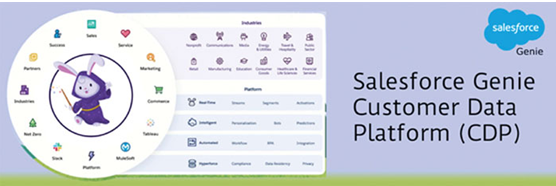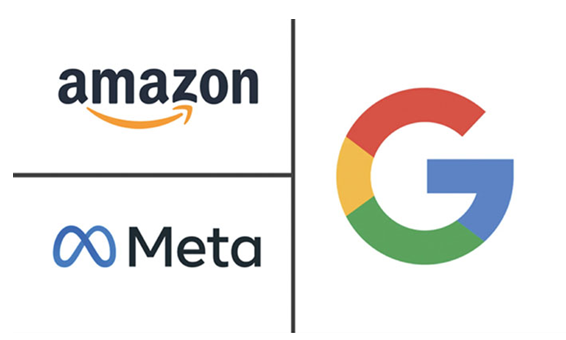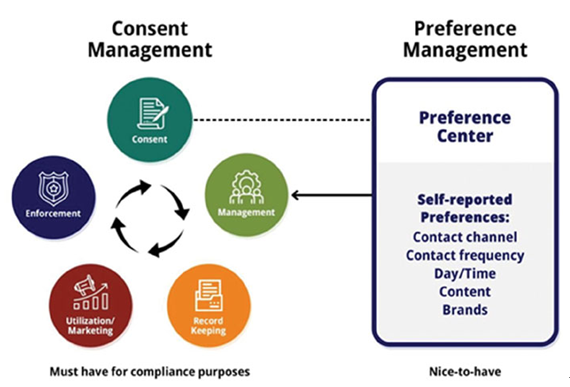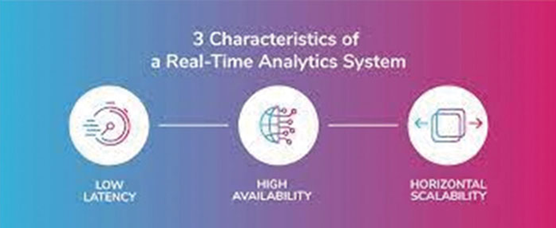Before diving into the concepts and high-level overview of Salesforce Data Cloud, let us understand the key benefits offered by it. As more and more companies use Salesforce Data Cloud to transform their businesses, we will get more such benefits. For a reasonably new product on the market, here are the key benefits offered by Salesforce Data Cloud:
- Benefit 1: Salesforce Data Cloud offers real-time data
We know we have said this a lot in the book but we cannot put emphasis enough on what a game-changing impact real-time data can have on businesses. On top of that, Salesforce allows Data Cloud to directly access the data in Snowflake, which is a data warehouse. There is no need to store the data in Salesforce. You can store the data in Snowflake and access it in real-time with the help of Salesforce-Snowflake integration. The open data sharing between Salesforce and Snowflake allows Data Cloud to directly access data stored in Snowflake, and vice-versa, enabling a real-time customer 360 view across the two platforms without moving or duplicating data.
Salesforce Data Cloud is also faster than Salesforce CDP with its zero data copy architecture. This means that Data Cloud can read data sources without having to migrate (or duplicate) the data into Salesforce. With this level of integration, Data Cloud can perform the required action in a matter of milliseconds.

Figure 3.7: Salesforce Data Cloud CDP can access data directly from Snowflake
- Benefit 2: Separate data by business units with Data Spaces
Data Cloud helps to partition real-time Data Cloud data by business units enabling different teams or brands within an organization to use the same Data Cloud instance, but only access the data they need to do their work. This is done using Data Spaces. This helps utilize the same Data Cloud instance at the same time protecting the data across departments.
- Benefit 3: Advertising with first-party data with partners such as Amazon, Google ads, and Meta
You can use your Salesforce Data Cloud first-party data for privacy-safe advertising activation and aggregated insights for more personalized and effective marketing campaigns.

Figure 3.8: You can use your first-party data with advertising platforms like Amazon, Meta, and Google
- Benefit 4: Streamline customer consent with Preference Manager
As stated earlier, Data Cloud helps to resolve challenges related to consent management. A new, simplified customer consent and preference management capability through Salesforce’s Privacy Center solution helps businesses build trust and stay ahead of privacy and compliance requirements. This streamlines requirements like the Right to Be Forgotten and Data Portability across multiple interactions to form a unified view of customer preferences as part of the unified profile.

Figure 3.9: Companies need to have a consent management system to take care of privacy regulations
- Benefit 5: Real-time analytics
Modern analytics tools are unable to provide real-time analytics. Data Cloud along with Tableau and CRM analytics is changing the way organizations use customer analytics. With one-click access to live analytics across all data in Data Cloud from any data source, companies can build a single source of truth — bringing in Data Cloud data alongside third-party data sources and accelerating time to insight.

Figure 3.10: Characteristics of real-time analytics system
In the preceding figure, we can see the three characteristics of a real-time analytics system:
- Low latency
- High availability
- Horizontal scaling
Low latency ensures that changes in the data are reflected quickly in the downstream applications.
High availability means that the analytics system has low downtime and is available more than 99.95% of the time.
Horizontal scaling refers to the ability to distribute loads across multiple nodes.
Salesforce Data Cloud, along with Tableau and CRM analytics, has these three characteristics to make it a real-time analytics system.
